Influences...
Most artists are quick to respond when asked to reveal the influences that shaped their work. Musicians, writers, film directors, actors and painters can normally point to someone who had a powerful effect on their style or method; early influence isn't limited to artists, as surgeons, scientists, athletes and even businessmen almost all have someone who played a role at the beginning.
The GCS is a blend of artist and scientist, and I have yet to meet a successful superintendent who cannot name several important influences on his or her career. While I don't presume to call myself successful, I did have a number of superintendents impress their styles on mine.
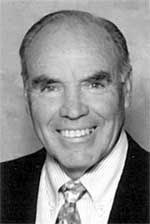 The first was Palmer Maples. Palmer was the CGCS at The Standard Club in Buckhead, before the area became a bunch of glass towers. (Even Palmer's course transmogrified into glass towers that were incompatible with flying balata projectiles) In the days when Norm, my dad, was still trying to escape the role of the Pro/Supt — that should really read Supt/pro — we use to trek up to Buckhead to observe and learn from Palmer. Dad held Palmer in high esteem, because Palmer Maples knew all the secrets of the superintendent and had once been president or king of the National Congress of GCS or some other name, I can't remember. (This was in the days before it became Imperial and fixated on lobbying and requiring expensive letters of peerage and birthrights behind a member's name.)
The first was Palmer Maples. Palmer was the CGCS at The Standard Club in Buckhead, before the area became a bunch of glass towers. (Even Palmer's course transmogrified into glass towers that were incompatible with flying balata projectiles) In the days when Norm, my dad, was still trying to escape the role of the Pro/Supt — that should really read Supt/pro — we use to trek up to Buckhead to observe and learn from Palmer. Dad held Palmer in high esteem, because Palmer Maples knew all the secrets of the superintendent and had once been president or king of the National Congress of GCS or some other name, I can't remember. (This was in the days before it became Imperial and fixated on lobbying and requiring expensive letters of peerage and birthrights behind a member's name.)
Anyway, Norm and I drove our golf course truck, a '48 Ford with the doors wired on with coat hangers, up to Buckhead to learn the art of French drains. There I met Mark Hoban, Palmer's assistant superintendent, who was to have a stronger influence on my style in the future than anyone else. Mark explained how the interceptor drain was constructed and the exact method for insuring the fastest cosmetic recovery from the surgery. It was easy to learn from Mark, but not so easy to learn from Palmer. Acquiring information from Palmer was somewhat akin to forcing a confession from an innocent man.
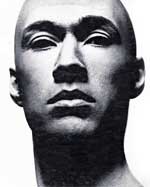
It was easy to learn from Mark, but not so easy to learn from Palmer. Acquiring information from Palmer was somewhat akin to forcing a confession from an innocent man
My brother, Mike, a very good superintendent, often said he felt like he was trapped in a segment of the old TV show Kung Fu, when asking advice from Maples the golf priest. Almost any question was followed by a question.
Mike: "Palmer, should we aerify early this year?"
PM: "Why do you want to aerify . . . grasshopper?"
Mike: "Because, uh, we . . . are supposed to?"
PM: "Why do you feel the need to aerify?"
Eventually we just gave up and bribed sales reps who visited Palmer to tell us what he was doing and then we tried to replicate it. But no matter how cryptic Palmer could be, I still thought he was magic; not only did he grow the first bent in the Deep South that I ever caressed, but he was the perfect example of the unflappable superintendent.
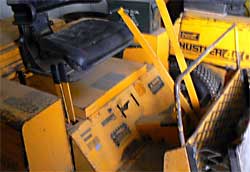
For example, when Hustler invented that greatest of all zero-turn-radius mowers, the one with the split control sticks and the single tailwheel, they brought it to Palmer to demo.
Palmer instantly taught the mower to launch into the famous buckin' bronco downhill slide and sailed the machine off a steep creek bank, backwards, upside down, landing in the water underneath the still running beast, blades up. He didn't overreact and shriek litigationary words, he just calmly crawled out from underneath.
That's hero stuff, right there. After that, I spent thousands of hours on Hustlers, doing the tree trunk donut, (backwards of course) an occasional wild bull ride down a hill and sometimes, rarely, swinging a tailwheel into a tree.
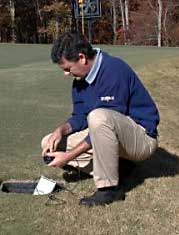 As to influence, Mark Hoban played more of a role in my thinking than anyone else. He was always so far ahead of the pack that I had to keep an eye on whatever he was doing. Mark was progressive, always experimenting with where he knew golf course maintenance was headed. His research into native areas, wildflowers, reduced out-of-play zones, natural bunker sand colors and playability allowed those of us with zero budgets to skip the testing phase and go straight for results.
As to influence, Mark Hoban played more of a role in my thinking than anyone else. He was always so far ahead of the pack that I had to keep an eye on whatever he was doing. Mark was progressive, always experimenting with where he knew golf course maintenance was headed. His research into native areas, wildflowers, reduced out-of-play zones, natural bunker sand colors and playability allowed those of us with zero budgets to skip the testing phase and go straight for results.
I remember one of his methods for changing the soil perc rate on a horribly built green was to drill it with deep, one inch holes and use funnels to put sand down in the formerly unreachable level. Mark's mind was always operating at high speed, especially when he was devising ways to blend the architect's style with golfer's expectations. This was long before the current trend toward architectural understanding became popular.
Norm influenced me by his one unyielding demand to always put true rolling greens first on your list, because that was the one thing that made golfers forgive other problems.
Mike, my brother, affected my style with his hard driving philosophy that boiled down to three areas:
- Playability. This was first on his list because he played the game at the highest level and would not accept poor playing conditions. Aesthetics were not his primary concern as long as the course played perfect.
- Drive the costs down.
- Devise ways to drive the costs further down.
There were others, and even though I'm not allowed anywhere near a maintenance facility anymore, I continue to be influenced by superintendents like Ken Mangum and his ability to handle the major league stuff. Mark Esoda, whose foresight, along with Mike Crawford and Anthony Williams, has led to Georgia superintendents moving to the head of the pack in the most critical issue facing golf: the water factor.
One of my heaviest influences was L. B. Floyd, Raymond's daddy. The man grew bentgrass in temps over 110 degrees and designed/built a course that would serve as the template for bringing the entry level golfer back to the game... if everyone wasn't so blinded by the Las Vegas Showgirl school of golf design and maintenance. L. B. was the leading example, in my view, of what is needed to save the golf industry: The Mom and Pop golf course pro/supt/owner with little desire to host a pro tour event.
My thinking, design style, architectural beliefs, swing theories and golf business models all came as a result of being influenced by L. B.
If you don't already have an influence like this on your career, go get one.


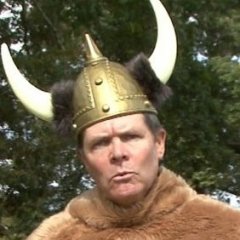
0 Comments
Recommended Comments
There are no comments to display.